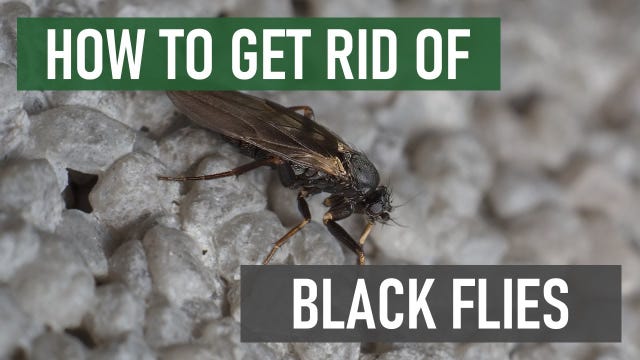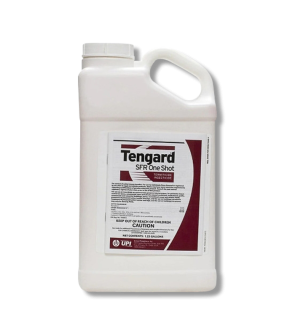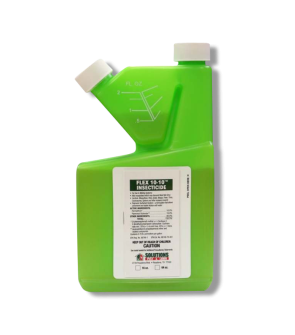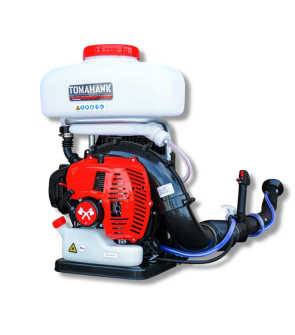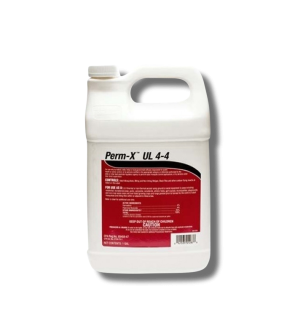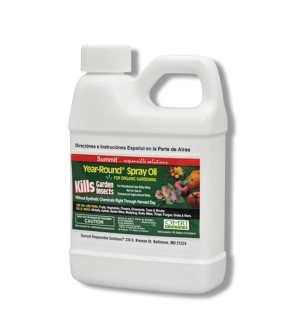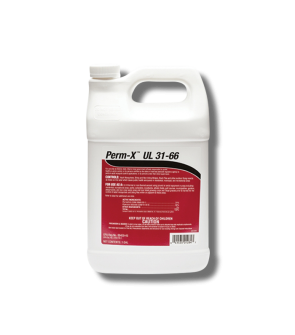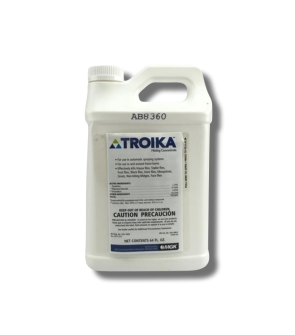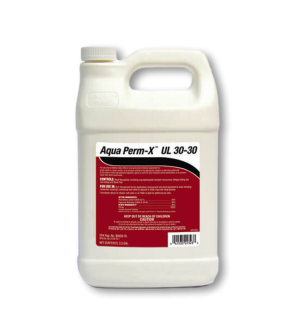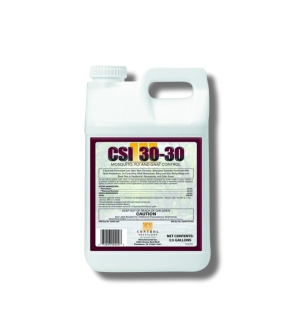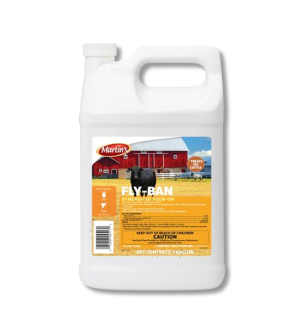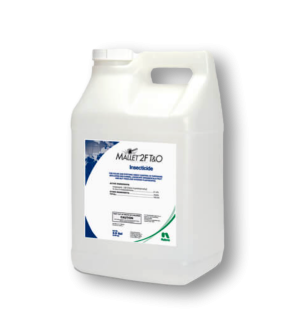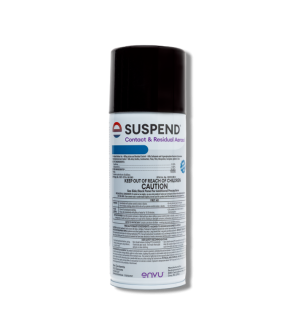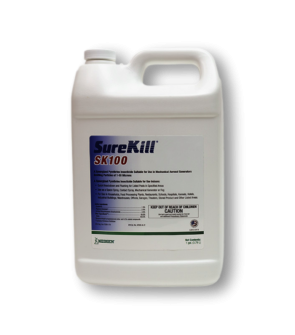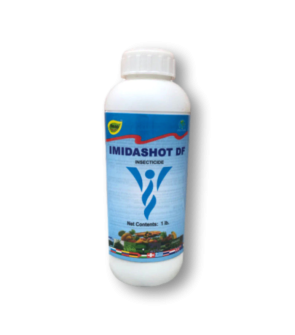Gain access to personalized product screening, the best pricing, rewards, and more!
Most Effective Products
Black Fly Control: How to Get Rid of Black Flies
This page is a general black fly control guide. Using the products and methods suggested, you will get control of black flies. Follow this guide and use the recommended products; we guarantee 100% control of black flies.
If you're outside enjoying the warm weather, black flies may ruin your experience. These small buzzing nuisances can be found worldwide and are known for spreading diseases. Black flies mostly bother humans but can be harmful or even deadly to cattle and poultry livestock.
A black fly bite on a human can cause itching, swelling, or worse symptoms such as nausea. Livestock are at risk of dying if a black fly bites them. Springtime is when black flies are most active and generally dormant in winter. A black fly infestation can permanently damage your livestock if left untreated.
If you have a black fly problem, follow this DIY guide for product suggestions and instructions on how to get rid of these pests effectively.
Identification

Because it might be difficult to tell the difference between different types of flies, it is important to identify the type of pest you are facing correctly. This will ensure that you are using the correct products and methods to eliminate this pest.
- The black fly may be known by other names, such as the buffalo gnat, turkey gnat, or white socks. It can be between 2 and 6 millimeters long, with short legs and large eyes.
- It has antennae and large wings. True to its name, most black flies are black, but some might be yellow or orange.
- While males get most of their food from nectar, most flies feed off livestock blood. The female black fly can lay up to 500 eggs at a time after feeding on blood, and these eggs will hatch anywhere from a few days to a month later. Only females will bite people, livestock, and other animals as they require blood to produce eggs, whereas males will only feed on nectar.
- Eggs are always laid in running water; each egg has silk particles that keep them secure while they feed on bacteria and algae. Feeding time for black flies is in the daytime when wind speeds are low. Flies will never enter areas where humans live when looking for food.
- They are most active between May and July.
- Typical bite sites for these pests are around the neck, behind the ears, and the lower legs. Bites are very painful and may swell and itch.
Use the picture and description above to be sure you are dealing with black flies. If you are unsure, contact us, and we will help you identify the problem.
Inspection

Once you have identified your pest as the black fly, look closely at and around the area where you are experiencing problems to treat these locations effectively.
Where to Inspect
Black flies live and breed around areas with running water. This makes sites such as rivers and lake areas ideal for their egg-laying activity. Rural properties near running water may be more prone to black fly activity than suburban residential areas, but that more or less depends on local geography. If you have been experiencing blackfly activity, take note of any sources of running water on or near your property.
Check areas where livestock are most active, such as barns or pens. The female black flies will feed off the animal's blood, while the males will be attracted to their waste. Areas with running water will most likely be egg-laying areas for black flies. If you notice black flies in your living quarters, it might be because they infest an area nearby.
What to Look For
If you have livestock, inspect your animals for bite marks or wounds around their ears and mouth. Fly bites can appear as red, swollen welts on animals. Black flies can appear in swarms and be bothersome to anything in their way.
Treatment
Now that you have inspected the area where black flies are infesting, you can begin treatment. The product you will be applying is Flex 10-10 Insecticide. You can apply Flex 10-10 with a handheld pump sprayer, hose-end sprayer, backpack sprayer, spray rig, automatic misting system, or ULV spraying system. A hand pump sprayer is recommended for general applications.
Flex 10-10 is a broad-spectrum product for indoor or outdoor control. You should treat any areas where flies are in or around your livestock. Wear the proper personal protective equipment (PPE) before handling or applying any product.
Step 1: Measure the Area

Before applying any product, you will want to measure the square footage of the area you wish to treat. You can do this by measuring the length and width of your treatment area in feet, then multiplying them together (length x width = square footage).
The mixing rate for Flex 10-10 outdoor applications is 6.4 fluid ounces per gallon of water. One gallon of solution will typically treat 1,000 square feet.
For example, to treat a 2,000-square-foot area, you must mix 12.8 ounces of Flex 10-10 in 2 gallons of water.
If you apply Flex 10-10 to your animals, the mixing rate will depend on the severity of the fly infestation. For normal conditions, mix 4 teaspoons of Flex 10-10 per gallon of water, and for severe conditions, mix 8 teaspoons of Flex 10-10 per gallon of water.
Step 2: Mix Flex 10-10

Now that you know how much product you will need for your treatment area, you can begin making your solution. Fill your spray tank halfway with water, add your desired amount of Flex 10-10, then add the remaining half of water. Close the tank and shake well to agitate.
Step 3: Apply the Solution
You can begin applying the solution after diluting Flex 10-10 in water. Use a direct spray to treat areas where black flies can land to rest, such as walls, ceilings, screens, door frames, window frames, and other similar places.
Be sure to remove all livestock and people from the area and cover all food before applying your solution. Do not apply Flex 10-10 near water. If you are applying this to your animals, use a fan spray setting.
Ensure you use enough product to thoroughly wet the hair, especially topline, underlines, flanks, withers, and other infested areas. You can reapply treatment to your livestock every 5 to 12 days until there is no more fly activity.
For a more active approach to treatment, Flex 10-10 is labeled to treat black flies in the air with a space spray application or an automatic misting system. With the proper equipment, you can space spray Flex 10-10 with an application rate of 3.2 fluid ounces of product per 1 gallon of spray dilution. Do not apply with humans or animals in the vicinity, and keep the area closed off for at least 10 minutes.
With an automatic misting system set up in livestock or animal housing areas, create and apply a solution of 0.09% permethrin and 0.09% PBO. This is done by mixing ½ a gallon of product with 55 gallons of water. The delivery rate should not exceed 1.25 fluid ounces of solution per minute, and the automatic misting system must not be designed to release pesticides where feed or water is directly exposed to spray mist.
Prevention
After treatment, you can take a few steps to ensure that black flies are unlikely to return to your area. In large, you need to focus on sanitation. Most black flies are attracted to blood but also feed off waste. We suggest the following measures to take to discourage black flies from targeting your property:
- Clean your area thoroughly and dispose of any garbage. Consider using trash cans with lids to keep trash concealed.
- Reduce moisture in your yard by keeping your drains clean and remove any stagnant water from your home.
- Be sure to keep your home and yard clear of pet droppings, and consider installing screens in your doors and windows to keep bugs outside.
- Retreat quarterly with Flex 10-10 as the residual protection is necessary to repel black flies from the treated areas.
Key Takeaways
What are Black Flies?
- Black flies are most active in springtime, and their bite could harm humans or livestock.
- Black flies are between 5 and 15 millimeters long with short legs and large eyes. The males eat nectar and are attracted to waste, while females feed off blood and lay their eggs in running water.
How To Get Rid of Black Flies?
- Dilute Flex 10-10 Insecticide in water and spray on your lawn and livestock to prevent black flies. A handheld pump sprayer is recommended.
Preventing Black Fly Reinfestation
- Prevent black flies by cleaning your area thoroughly and disposing of any garbage. Focusing on sanitation measures will discourage flies from frequenting your property.






